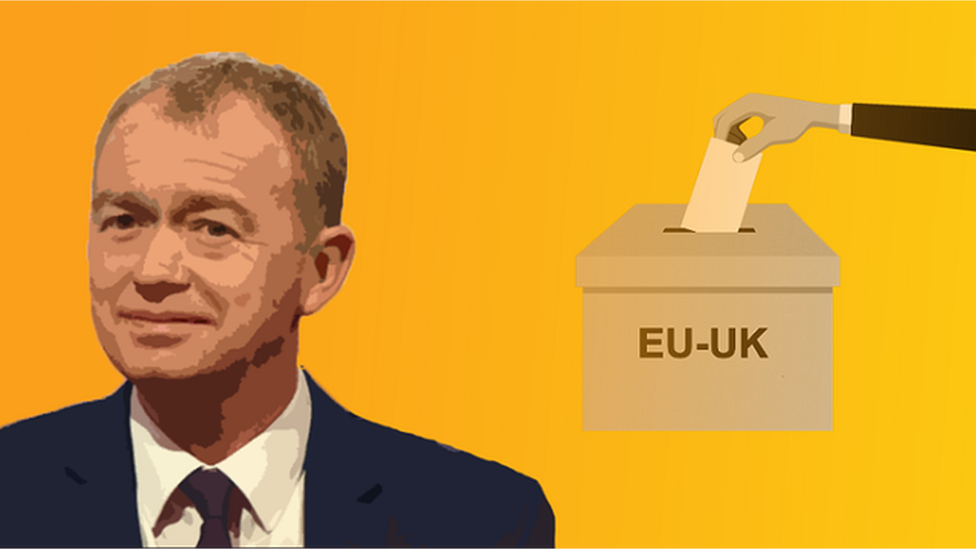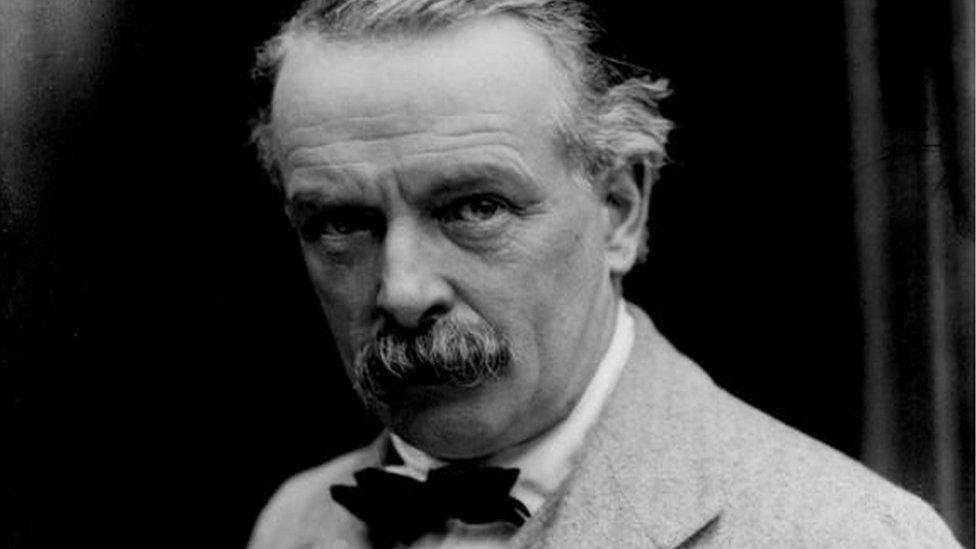Guide to the parties: Liberal Democrats
- Published

The Liberal Democrats, who traditionally occupy the centre ground of British politics, will be hoping to bounce back from a disastrous showing two years ago.
Potted history:
As the Liberal Party it was one of two great UK political powers in opposition to the Conservatives in the 19th and early 20th Centuries, producing prime ministers such as Lord Palmerston, William Gladstone and Herbert Asquith.
However the party split into two factions, external during the First World War, with one, led by David Lloyd-George, forming a coalition government.

David Lloyd-George split the party
The party's fortunes declined sharply from the 1920s as it was eclipsed by the Labour movement.
The modern day centre-ground Liberal Democrat party emerged out of a merger of the Liberal Party and the Social Democratic Party in the 1980s. It reached a modern-day high water mark with 62 seats in 2005, and entered a coalition government with the Conservatives in 2010.
Where are they now?
Nick Clegg: "I must take responsibility and therefore I announce that I will be resigning as leader of the Liberal Democrats''
The 2015 election was catastrophic for the Liberal Democrats, as voters appeared to take a dim view of the compromises made in government, in particular going back on a manifesto pledge to scrap student tuition fees. The party's vote collapsed, and they went from 57 MPs to just eight. Leader Nick Clegg resigned and Tim Farron took over.
The last official figures, published in February, showed the party had 82,000 members, but it says it has now passed the six-figure mark.
Key players:
With just nine MPs (after a by-election win), much will depend on whether Farron can achieve anything like the public profile that his predecessor Clegg managed in 2010, when support for the party surged, external in the wake of the first of the leaders' televised debates, before falling away on polling day.
Critics say Tim Farron hasn't made the most convincing of starts in the campaign, allowing himself to be diverted by media interest in his religious views. But the "Lib Dem fightback" since the EU referendum has seen a rise in opinion polls, council election gains and the party moving on from its post-coalition lows.
Experienced old-hands such as former business secretary Vince Cable, Simon Hughes, and Nick Clegg may have a significant role to play. Both Cable and Hughes lost their seats in the 2015 bloodbath, but Cable, in particular, has maintained a high media profile, although he doesn't always toe the party line, external.
Leader's philosophy in a quote:
"Young people voted to remain [in the EU] by a considerable margin, but were outvoted. They were voting for their future, yet it has been taken from them."
What the critics say:
"I am determined not to allow parties like the Liberal Democrats to prosper, because it is in their interests to prop up a Corbyn coalition of chaos so that the Brexit process stalls and they can reopen the battles of the past." Theresa May, prime minister.
What do they hope to achieve?
There was talk of a major resurgence after the party overturned a huge majority to capture the Richmond Park seat of former Conservative mayoral candidate Zac Goldsmith in December. But that has been tempered since by an underwhelming performance in the local elections, in which the party increased its share of the vote by seven percentage points, but lost more than 40 seats.
Mr Farron has now set his sights on doubling the number of MPs. In particular, the party will hope to regain lost seats in its traditional strongholds - the West Country and south-west London.
Strong suit?
Brexit. Some 48% of the British electorate voted to remain in the European Union, and the Liberal Democrats, as the only major party to unequivocally support staying in, will hope to pick up a sizeable chunk of those voters. Richmond Park - a constituency which registered one of the biggest Remain majorities in the referendum - showed what could happen.
Lib Dem Sarah Olney beat Zac Goldsmith in the Richmond Park by-election.
Where do they stand on Brexit?
In Tim Farron's words, campaigning against "hard" Brexit - in which the UK would leave both the single market and the customs union - are "front and centre" of the party's election campaign.
The party's manifesto will include a commitment to another EU referendum on the final Brexit deal, in which voters would get two choices - accept the Brexit deal or stay in the EU.
The party has already pledged to campaign for a Remain vote.
Five key policies:
Commitment to another EU referendum, in which the party would campaign to remain
Replace the first-past-the-post electoral system with a proportional voting system
Reverse cuts to Universal Credit